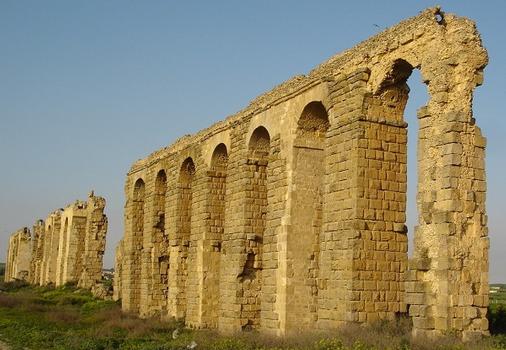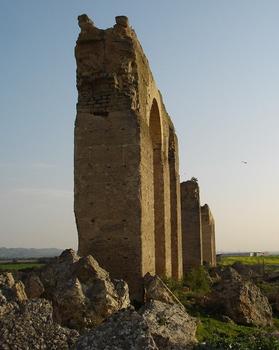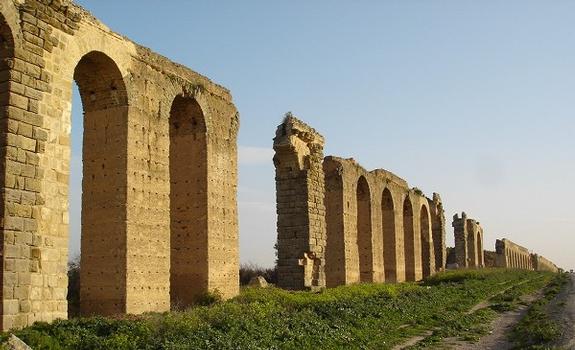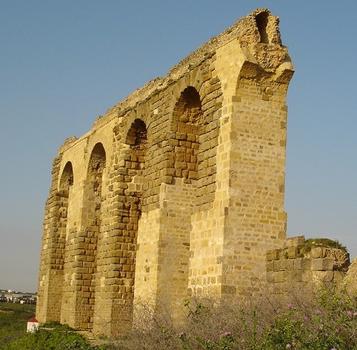General Information
| Other name(s): | Carthage Aqueduct |
|---|---|
| Completion: | 2nd century |
| Status: | partially in service |
Project Type
| Function / usage: |
Aqueduct |
|---|
Location
| Location: |
Tunis, Tunis, Tunisia Carthage, Tunis, Tunisia |
|---|---|
| Coordinates: | 36° 38' 14.08" N 10° 7' 46.23" E |
Technical Information
Dimensions
| total length | 132 km |
Excerpt from Wikipedia
The Zaghouan Aqueduct or Aqueduct of Carthage is an ancient Roman aqueduct, which supplied the city of Carthage, Tunisia with water. From its source in Zaghouan it flows a total of 132 km, making it among the longest aqueducts in the Roman Empire.
40 ha of its length are also classified as an Important Bird Area (TN013) as the cavities and holes in the aqueduct are used as nesting and roosting sites for falcons and other species.
Date
The date of the construction of the aqueduct is not entirely clear. Sources mention a visit by the Emperor Hadrian in 128, with which a five-year-long drought is meant to have come to an end. The water shortage resulting from the drought might have convinced him that the people should not rely only on rainwater anymore. A second event that might have inspired it was the opening of the Baths of Antonius in Carthage in 162. These facilities on the same scale as the Imperial baths in Rome demanded a steady supply of water, which could not be fulfilled with rainwater.
Text imported from Wikipedia article "Zaghouan Aqueduct" and modified on February 14, 2023 according to the CC-BY-SA 4.0 International license.
Participants
Currently there is no information available about persons or companies having participated in this project.
Relevant Web Sites
Relevant Publications
- (2002): L'aqueduc de Carthage. In: Dossiers d'Archéologie, n. 274 (June 2002), pp. 38-39.
- (1979): L'aqueduc de Carthage. In: Dossiers d'Archéologie, n. 38 (October - November 1979), pp. 34-42.
- About this
data sheet - Structure-ID
10060303 - Published on:
09/06/2011 - Last updated on:
28/05/2021











